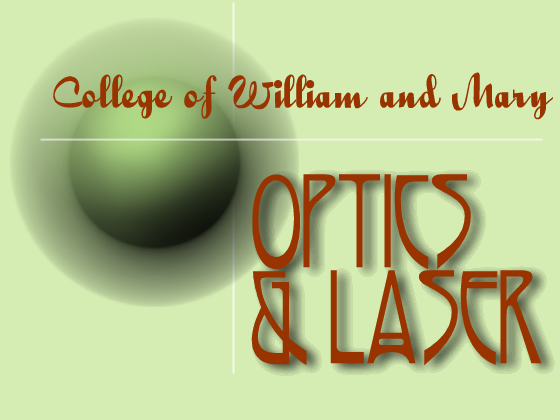
| |
| Home |
| Contact |
| Directions |
| Research |
| People |
| Publications |
| Photos |
| myWM |
Our research projects:
We are interested in the physics and development of novel electronic and magnetic devices, as well as exploring fundamental optical interactions between light and matter. Our research areas cover a wide range with an emphasis on magnetic heterostructures, proton conducting oxides, colossal magnetoresistance materials, and high-TC superconductors. The focus of our research is on understanding dynamical processes (electronic, magnetic, and vibrational) localized at surfaces and interfaces, and in the bulk at defects and impurities. Most of our research involves nonlinear optical techniques based on ultrafast high-power lasers which provide femtosecond time resolution and allow characterization of buried interfaces which are not easily accessible by conventional surface probes.
If you are planning on pursuing a Ph.D. degree at the interface between Physics and Electrical Engineering, please contact me (luepke@wm.edu) for more information and include your resume.
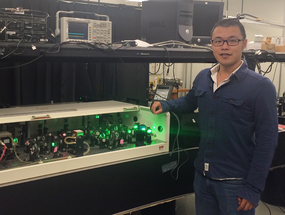 |
:: | Optical Control of Magnetism by Surface Plasmon Excitation |
| Surface plasmons (SPs) introduce large enhancement of the local field intensity by coupling incident photons to conduction electrons of metals. The goal of this project is to utilize the local field enhancement induced by the excitation of surface plasmons to optically control and modulate the magnetism in novel magneto-plasmonic nanostructures. Magneto-optical Kerr effect (MOKE) and magnetization-induced second harmonic generation (MSHG) are our major techniques to detect the plasmon-induced magnetic anisotropy changes at surface and interface. Topics: Nonlinear Magneto-Plasmonics; SP-Enhanced Transverse MSHG; Control of Magnetic Contrast | ||
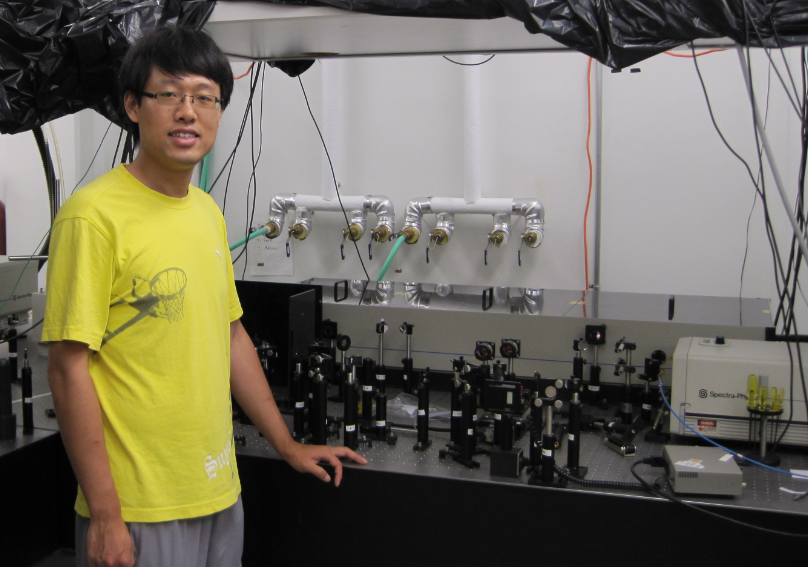 |
:: | Ultrafast Spin Dynamics and Magnetoelectronics |
|
The growing importance of ultrafast magnetoelectronics has triggered intensive research in magnetization and spin dynamics. The goal of this project is to elucidate the role of exchange bias, magnetic anisotropy, and interface magnetic structure on the ultrafast magnetization switching and damping mechanism in novel magnetic heterostructures.
| |
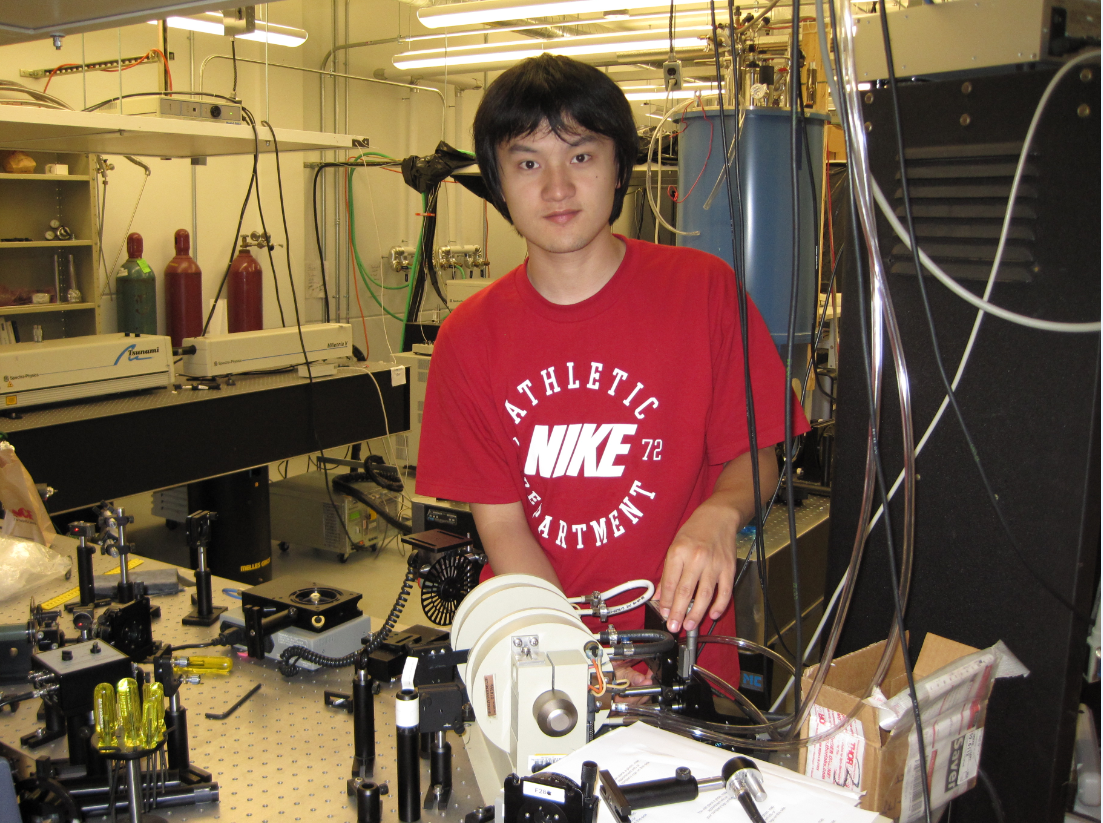 |
:: | Novel Magnetic Interface Phenomena in Complex Oxides |
| The phase complexity in doped transition metal oxides makes the investigation of periodic layered structures especially intriguing, given the possibility of engineering charge, spin and orbital ordering in a layer-by-layer manner. The goal of this project is to elucidate the interfacial magnetic structure and its correlation with charge transfer, orbital states and the strain states induced by the substrate in various complex oxide thin-film heterostructures and superlattices. Topics: Magneto-Electric Effect; Interface Phenomena; Coherent Spin Dynamics; Coherent Acoustic Phonons | ||
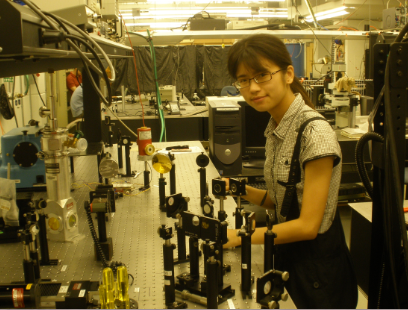 |
:: | Vibrational Dynamics and Diffusion of Hydrogen in Solids |
The goal of this project is to elucidate the dynamics of the local vibrational modes (LVMs) of defects related to light impurities in crystalline semiconductors (Si, Ge, GaAs) and metal oxides (ZnO, TiO2, KTaO3). This area of materials science is important to elucidate degradation of electronic and optoelectronic devices, and to advance solid oxide proton conductors for fuel cells, gas sensors and proton-exchange membrane applications. | ||
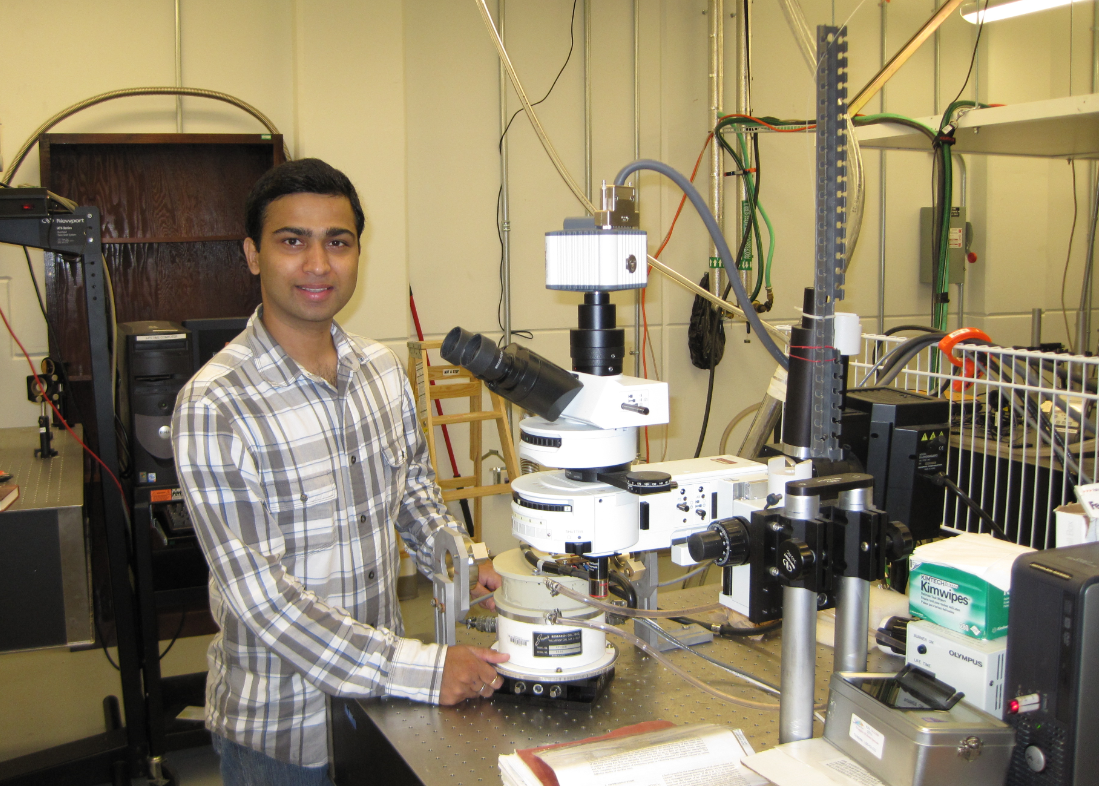 |
:: | Vortex Dynamics in High-Temperature Superconductors |
|
The goal of this project is to study the relationship between vortex dynamics and ac losses in high-temperature superconductors. To achieve this objective we developed a new time-resolved magneto-optical imaging (TR-MOI) technique to study the interaction of an ac current with a magnetic field in nanoparticle-doped YBCO, multi-filamentary YBCO, and MgB2 thin films. Experimental Technique
|
|
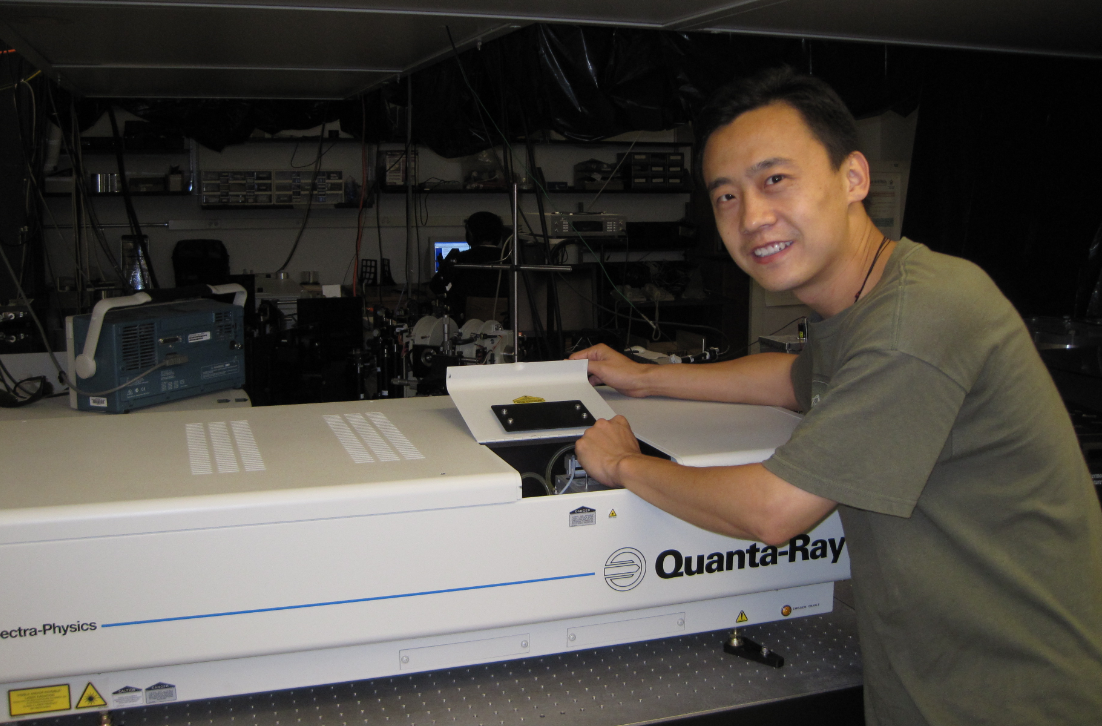 |
:: | Application of High-Power Ultra-Short Laser Pulses |
|
We are developing a terawatt Ti:sapphire amplifier system capable of producing ultrashort laser pulses with energy up to 100 mJ and duration of less than 100 femtosecond at 30 Hz repetition rate. The goal of this project is to use the high-power laser pulses to generate short-pulse X-rays and to apply the fast X-rays in resonant X-ray magnetic scattering (RXMS) and X-ray magnetic circular dichroism (XMCD) studies of novel magnetic heterostructures. Topics: Terawatt Laser Pulses |
|